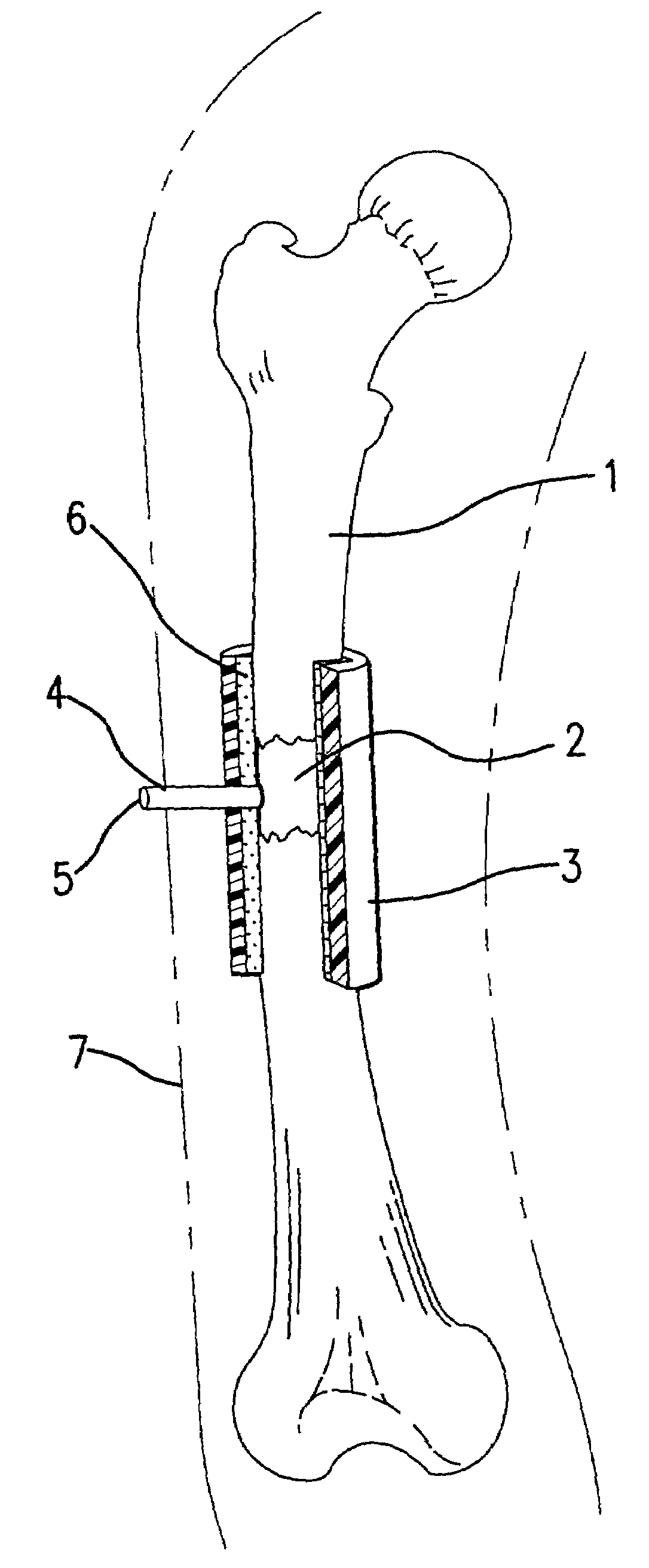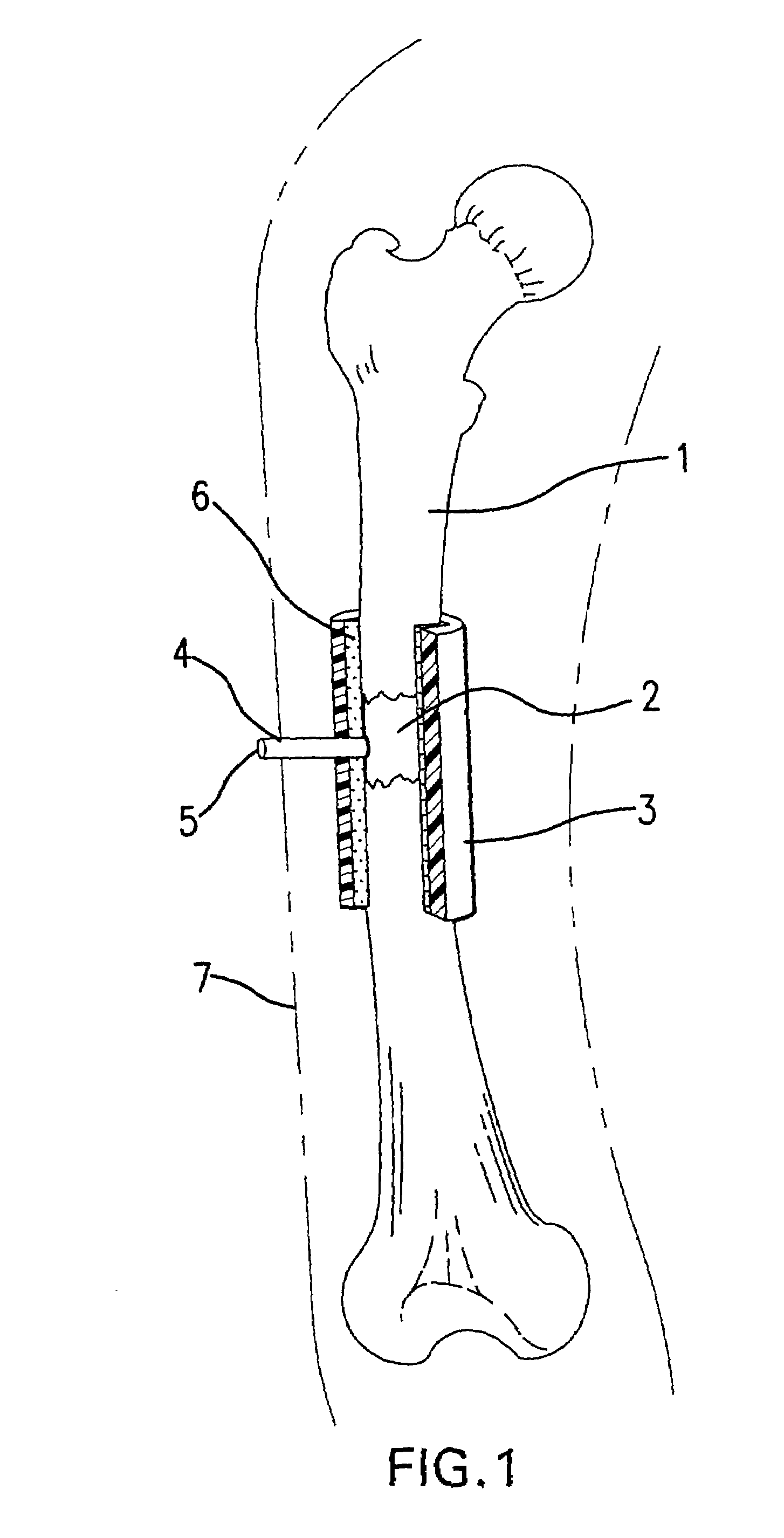Bone regeneration device for long bones, and method of use
a bone regeneration and long bone technology, applied in the field of local bone regeneration for long bones, can solve the problems of bulky devices, long time-consuming and laborious, and no method is yet completely satisfactory, and achieves the effect of improving the quality of life and reducing the difficulty of us
- Summary
- Abstract
- Description
- Claims
- Application Information
AI Technical Summary
Benefits of technology
Problems solved by technology
Method used
Image
Examples
example 1
The Surgical Protocol
[0021]Under sterile conditions, the bone to be treated is reached surgically. Skin, fat, muscles, etc. are blunt-resected from the bone.
[0022]The autoclaved sleeve or cuff device is slipped around the desired discontinuity section of the bone, and sealed to the bone with surgical glue (e.g., Nexaband liquid, Veterinary Products Laboratories, Inc.).
[0023]The vacuum port of the device is attached to a vacuum pump, and the device evacuated to the desired pressure, e.g., about 30 in. Hg. At this point the vacuum port is sealed so as to maintain the vacuum. The subcutaneous tissues are closed with sutures, e.g., a 4-0 Dexonsuture, and the skin sutured closed.
[0024]The degree of vacuum can be monitored by a vacuum gauge attached to the vacuum port.
[0025]At an appropriate length of time, e.g., about four weeks, the device (still well-sealed) is removed from the long bone. An osseoid thickening of the bone at the site of the treatment will be noted.
PUM
 Login to View More
Login to View More Abstract
Description
Claims
Application Information
 Login to View More
Login to View More - R&D
- Intellectual Property
- Life Sciences
- Materials
- Tech Scout
- Unparalleled Data Quality
- Higher Quality Content
- 60% Fewer Hallucinations
Browse by: Latest US Patents, China's latest patents, Technical Efficacy Thesaurus, Application Domain, Technology Topic, Popular Technical Reports.
© 2025 PatSnap. All rights reserved.Legal|Privacy policy|Modern Slavery Act Transparency Statement|Sitemap|About US| Contact US: help@patsnap.com


